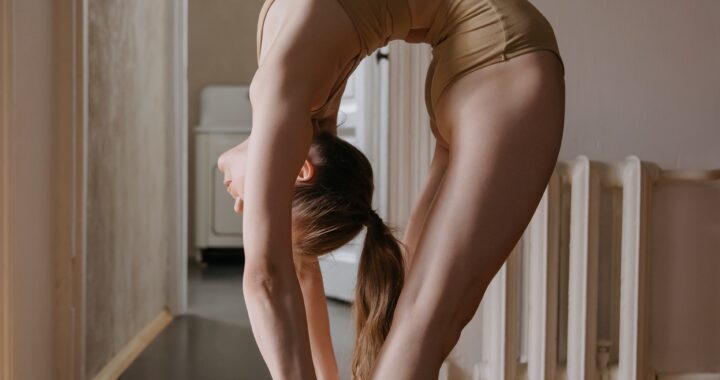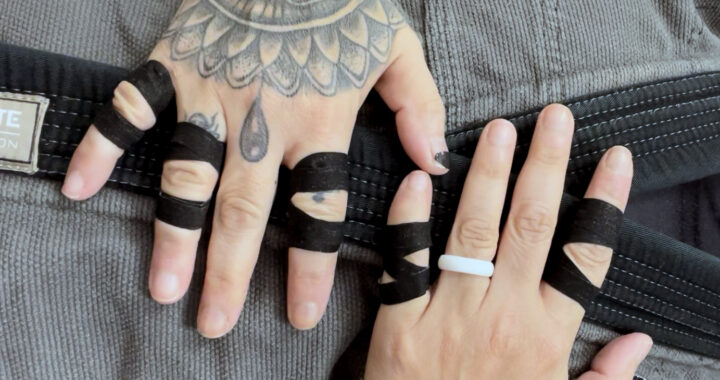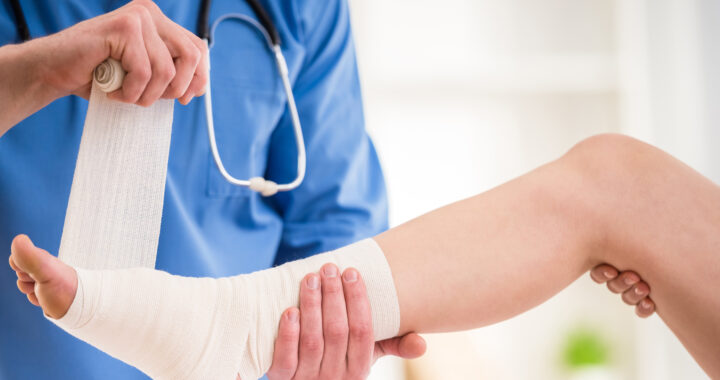Low Back Pain

Can Be a Real Pain in the Butt
By Chris Fletcher
Jiu-Jitsu can put a lot of stress on the lumbar spine from both takedowns and positions on the ground. The lumbar spine does not like a combination of bending, lifting, and twisting, and unfortunately that combination can occur quite often.

Roughly 80% of the population will experience at least one episode of low back pain within their lifetime. And approximately 95% of disc herniations occur at L4/5 or L5/S1. Lumbar disc herniation, which is a small displacement of the disc material outside of the margins of the disc space (1), is most common from age 30-50 and in men to women at a rate of two to one.
Disc degeneration is associated with disc herniation. The disc undergoes dehydration and collapse which pulls on the annulus fibrosus and creates tears that allows the annulus pulposus (inner core) to herniate. Then when repetitive mechanical stress is added, it creates a slow, gradual onset and chronic symptoms. The other common way to herniate a disc is a large axial load on a healthy disc that will cause acute sharp symptoms. (1)
Approximately 85% of people with acutely herniated discs will have relief of symptoms within 6-12 weeks without intervention and, often unless there are red flags, medical providers will wait on imaging. When imaging is performed, X-ray is often chosen first to rule out fractures. MRI is the gold standard for confirming suspected disc herniation.
Non-operative treatment for disc herniation commonly includes anti-inflammatory medication (including local corticosteroid injections), education, and physical therapy. Over 40% of people who receive conservative care will undergo surgical treatment within two years. For people who do undergo surgery, there is a 7-18% risk of reherniation within two years and 80% of those people will have another surgery. (2)
So the next time your back starts hurting or you start having pain in your gluteal region, consider that it may be a disc herniation with irritation to the nerve root. The best way for Jiujiterias to avoid disc herniation pain is prevention in the form of core and gluteal strengthening, good sleep, good nutrition, and avoidance of overtraining.
Signs and symptoms:
• Low back pain
• Radicular pain (pain into the buttocks and or legs)
• Sensory changes into the legs
• Weakness into the legs
• Restricted lumbar range of motion
• Increased pain with straining, coughing, sneezing
• Pain increased with sitting (increases pressure to the nerve root by 40%)
80% of the population will experience at least one episode of low back pain within their lifetime.
Disclaimer: The content in this article is for informational purposes only – it is not intended to delay or substitute for professional medical advice, diagnosis, and/or treatment. The content is not intended to promote understanding of various musculoskeletal injuries. Content may not apply to your specific condition or symptoms. Always seek the advice of your physician or other qualified medical professional for any question you have for a medical condition.
References:
1. Al Qaraghli M. Lumbar Disc Herniations. Stat Pearls. September 2021. Internet source.
2. Arts MP, Kuršumović A, Miller LE, Wolfs J, Perrin JM, Van de Kelft E, Heidecke V. Comparison of treatments for lumbar disc herniation, Systematic review with network meta-analysis. Medicine: February 2019 – Volume 98 – Issue 7.

Our printed magazine is full of extraordinary women with extraordinary stories, get your printed copy via mail today >



 Return to Play
Return to Play  Hypermobility Spectrum Disorder
Hypermobility Spectrum Disorder  Finger Pulley Injuries and the Value of Taping
Finger Pulley Injuries and the Value of Taping  Hip Pain and the Sneaky Tensor Fasciae Latae
Hip Pain and the Sneaky Tensor Fasciae Latae  Toe Hold
Toe Hold  Wrist Locks:
Wrist Locks:  Father Time is Undefeated
Father Time is Undefeated  The Jiujiteira Sisterhood
The Jiujiteira Sisterhood  Advice in the Ranks- From White to Black
Advice in the Ranks- From White to Black  ADGS Rome: Jiujiteiras Shine in the Land of the Colosseum
ADGS Rome: Jiujiteiras Shine in the Land of the Colosseum